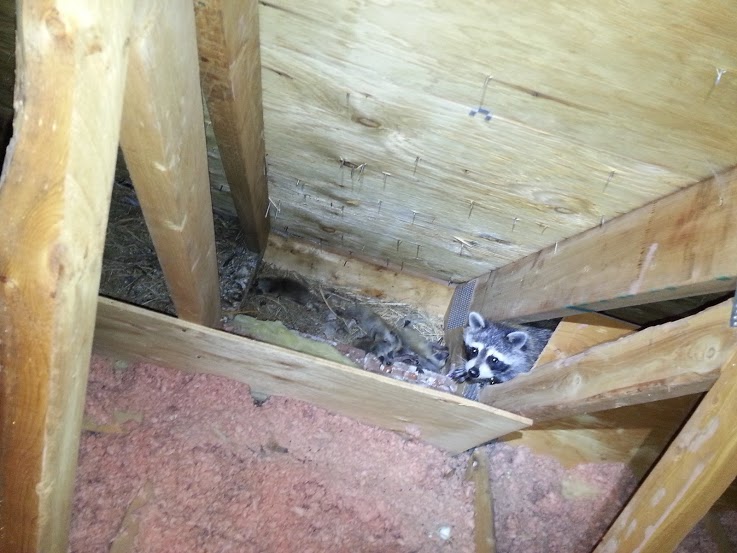Many calls for wildlife control in Okanagan are about raccoons that have broken into human homes. Raccoons like human habitations because they often offer consistent sources of food, such as garbage cans. They also offer shelter from predators and den sites that are warm and private. Raccoons often end up in the attic, though they may make a den in any part of the house that is infrequently trafficked.
It may be easier for a raccoon to enter your home than you may realize. Here are some abilities they have to help them break into human homes.
1. Agility
Raccoons are very agile climbers. In the wild, they frequently make their dens in the hollows of trees as this provides them and their babies protection from predators. When raccoons make dens in human homes, their instincts to seek shelter in high places kick in, and they may climb to the upper levels of your home.
A downspout on the side of your home is something like a slender tree trunk in the paws of a raccoon, making it easy for the animal to climb right up. Raccoons even have the ability to scale the side of a brick building by using the mortared joints between the bricks as toeholds. Their ability to climb makes it easier for them to reach the upper levels of your house.
2. Dexterity
Raccoons’ front paws bear a remarkable resemblance to human hands. Like hands, the front paws have five fingers. Raccoons don’t have opposable thumbs, but they nevertheless have remarkable manual dexterity.
Raccoons’ nimble fingers allow them to manipulate objects. They can cause a lot of damage to your home making holes in roof soffits, shingles, vents, and chimney tops to get inside the house. The chimney may remind a raccoon of a tree hollow, and it may decide it is the perfect spot to make a den as a result. Raccoons in the chimney are a hazardous situation for both you and them.
Raccoons may cause other types of damage trying to get inside a home. They can remove window screens and may be able to actually push out the windows.
3. Intelligence
Raccoons are highly intelligent. Research has shown them to be much more intelligent than cats or dogs and nearly as intelligent as monkeys. If you have a pet door and a dog or cat can figure out how to use it to get in and out, a raccoon can learn to use it to get inside as well. Raccoons will try to eat pet food if you leave it outside. If you do not, they may try to come inside to get it if you use a pet door. Fortunately, there are pet doors that only respond to a special sensor on your dog’s or cat’s collar, meaning that the door will open only for your pet and keep raccoons out.
4. Memory
If you have a keypad lock on your door, raccoons may figure out how to open it by watching you punch in your code. Raccoons have an extremely sharp memory, so if they watch you long enough, they may be able to learn how to punch in the code to open the door on their own. Not only that, but other raccoons can learn by observing the raccoon that knows the code.
5. Tenacity
Raccoons show significant problem-solving ability. They can be very tenacious at trying to figure out a puzzle, such as how to open a door or window, if they think they will be rewarded for their efforts.
Call Skedaddle for Wildlife Control in Okanagan
Raccoon removal is one of several wildlife services we offer. Find out more about how we remove wild animals safely and humanely from your home.



